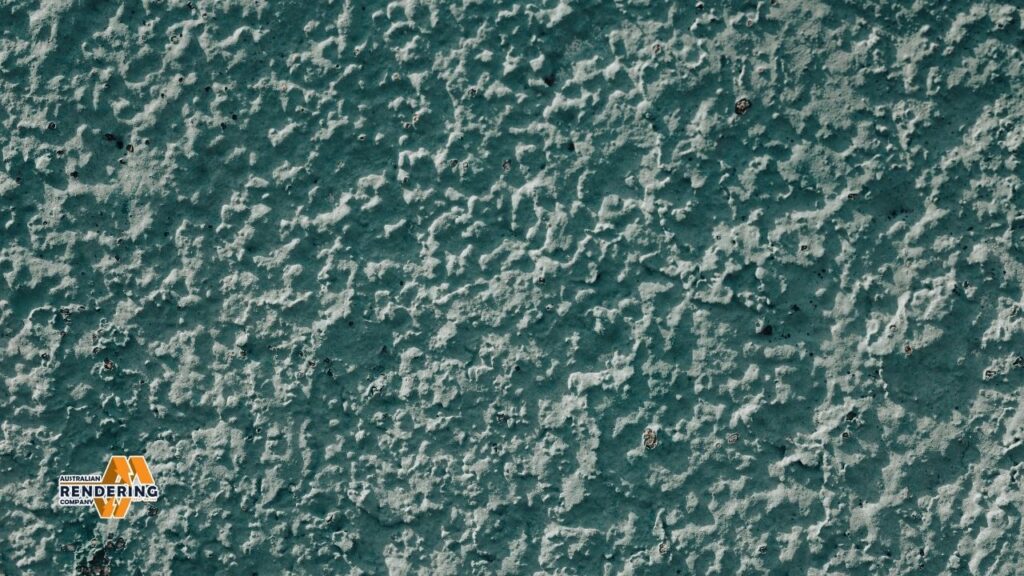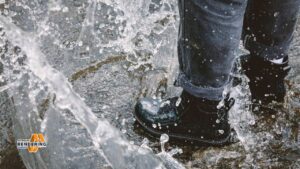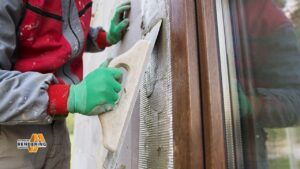There are a number of exterior renders on the market these days. One of the names that always crops up and is well known is K Rend. But why K Rend? In this article, we will take a closer look at K Rend silicone render, including what it is, how it works, and the advantages of using it. It also makes a few FAQs and thorny issues about this rendering system.
What is K Rend?
K Rend is a pre-mixed render produced by Kilwaughter Minerals. It’s a special external application on buildings as a decorative and protective coat. The main characteristic of K Rend is its silicon composition, which provides better water repellent and durable properties.

What is K Rend Made Of?
K Rend consists of a combination of the following materials:
- Silicone: This is the main component that gives K Rend its ability to repel water. It allows the render to breathe so moisture can escape without water getting back in.
- Cement: Cement is the main binding compound that retains the entire mix together and provides strength.
- Aggregates: These are fine materials such as sand or crushed stone that provide mass and texture to the rendering.
- Pigments: These lend the color. K Rend has 3 ranges of pre-mixed K Rend colours, in this way we can guarantee a consistent finish.
- Additives: These improve workability, adhesion, and other characteristics.
Benefits of K Rend Silicone Render
Advantages of K Rend silicone render are:
- Water Repellence: The acrylic silicone content provides extremely high water-repellency to the render, preventing rain and dampness on the building.
- Breathability: K Rend is fully breathable and can repel water while still letting moisture escape from the building. It also helps to reduce condensation and damp problems in the building.
- Durability: K Rend has a long-lasting durability that can resist different types of weather while staying clean for decades.
- Minimal Upkeep: The anti-splash facets keep the render clear, leading to little or no upkeep.
- Available in Variety of K Rend Colours: K Rend is a product that comes in a large number of K Rend colours, providing scope for aesthetic design.
- Factory Mixed: There is great consistency observed in the color, thus reducing the chances of mixing error during work at site.
K Rend Silicone Render — How To Apply
Correct application of K Rend silicone render is crucial for an everlasting, high-quality finish. Here’s a step-by-step guide:
Preparation
- Surface Preparation: The surface should be clean, dry, and free from loose material, dust, and contaminants. Any old paint or flaking render will need to be chipped away.
- Priming: Apply a suitable primer, where applicable. The primer assists with the development of the bond between the render and the substrate. Use the appropriate primer as specified by the manufacturer.
- Mask Windows and Doors and Other Features Around: Have the masking tape and protective sheeting on hand for windows, doors, and other features.
Mixing
- Preparing K Rend: K Rend comes as a dry powder. Then pour clean water into it according to the ratio of render to water which the manufacturer provided. Too much water can dilute the render.
- How to Mix: Use a variable speed mixer to mix the render with water to the desired consistency. Blend until a fine, uniform, and pliable earth mortar is obtained.
Application
- Step 1: First Coat: Apply a light first coat of K Rend onto the prepared substrate, using a hawk and trowel. Press the render into the surface to promote good bonding.
- Scratch Coat: When the first coat has set enough that it will not pull, scratch its surface with a scratch comb. This is where you get the keyhole to the second coat.
- Second Coat: Follow the second coat of K Rend by slowly layering to build thickness. Use a hawk and trowel for a flat, level finish.
- Texture: Use a plastic float or sponge float to put on the texture after the second coat is partially set. This can vary from light stippling to a heavier textured look.
Curing
- Curing: Cover the render to protect it from excessive exposure to sun basking, over wind, and rain. This also prevents cracking and ensures that the cement gets hydrated.
- Letting It Cure: The render needs to cure for the prescribed time, which is generally 24 to 48 hours in favorable weather conditions.
Using professionals such as Australian Rendering Company is the best way to go about it. They render services all over Melbourne, and also have experience with K Rend and other specialist finishes. Contact them at 0466 943 872 or contact@australianrenderingcompany.com.au.
K Rend Weather Conditions
The application and curing of K Rend relies heavily on weather conditions. K Rend should not be applied in the following situations:
- Direct Sunlight: Direct sunlight will dry the render too fast, thus causing cracking.
- Strong Winds: High winds also dry quickly, increasing the risk of cracking.
- Rain: Rain may be the single biggest cause of ruined render surface as it can wash away the render before it is properly set.
- Freezing: Freezing conditions will stop the render from curing and cause it to fail.
The best type of weather for K Rend to be applied under is a mild, dry, overcast day.
Price and Cost Consideration of K Rend
K Rend price is not a fixed price and it can change based on different factors, including but not limited to:
- Size of Area: The greater distance that needs to be rendered, the more expensive things will get.
- Vary, depending on the K Rend product: Adjustable in render type.
- Color: Some colors have a premium over others.
- Where are you located: Labor costs may vary by region.
- Surface Preparation: If an extensive amount of surface preparation needs to be done, this drives up the cost.
This is often calculated by using the K Rend price per m². To get an idea of what is reasonable, you should source quotes from a few suppliers and contractors.
K Rend Problems and Solutions
Although K Rend is a very effective and robust rendering system, some K Rend problems can happen:
- K Rend Cracks: Cracks are some of the most common problems with K Rend, and can be caused by a number of reasons such as rapid drying of the material, movement in the building or improper application. However, most small cracks can be filled with a slightly flexible filler. More serious cracks may involve more extensive K Rend repair.
- Staining: Staining can occur due to algae growth, dirt, or due to contamination. With regular cleaning, discolouration can be avoided. The render will be required to be replastered in extreme situations.
- Impact Damage: Impact damage happens due to accidents or extreme weather. Most small areas of damage can be repaired using a repair compound. In larger areas, this may affect replacing the damaged render.
How to Fix K Rend
How to fix K Rend depends on the level of damage. Flexible sealants can then fill in minor cracks. More extensive damages may mean removing the affected area and replacing it with fresh render. Match the color so you get a seamless finish.
K Rend vs Monocouche
Also, comparing K Rend to monocouche is a common one. Monocouche render is a one-coat render, and K Rend is generally a two-coat system. Monocouche is a quicker application process and may not be as water repellent as K Rend. Depending on budget, how quickly you want the project to be done, and the kind of finish you’re looking for, make your pick.
Is K Rend Silicone?
Yes, K Rend is silicone. K Rend is even more water-repellent, breathable, and durable as it employs a silicone component in the render.
How to Colour K Rend
K Rend is coloured with pigment pre-mixed at manufacturing. So, we have a solid colour consistent throughout the render. K Rend is actually a pre-mixed plaster and it should never be painted over because doing so can clog its breathable element.
How to Repair K Rend
The nature of damage determines how to fix it. Flexible fillers can fill small cracks. Wider regions might require cutting and re-rendering. It is important to match the existing colour for blending.
How to Use K-Rend
The “Applying K Rend Silicone Render” section covers how to prepare the work surface and mix the render before applying in coats from the base up, texturing and curing.
What is K Rend?
K Rend is a brand name for a pre-mixed silicone render used for building exteriors.
How do you mix K Rend?
K Rend is mixed using dry mix and clean water, following the instructions that came with the mix. This is stirred together until smooth and malleable.
Perfect Weather Conditions to Use K Rend?
K Rend is best applied in mild, dry, overcast weather. It should be protected from direct sun, rain, and heavy wind.
Can K Rend crack?
Yes, K Rend can crack if it dries out too quickly, if the building moves, or if it is incorrectly applied. Flexible fillers can repair minor cracks, but larger cracks may require more extensive repair.
Curing time for K Rend?
The curing time for K Rend is typically 24 to 48 hours, but this depends upon the weather.




